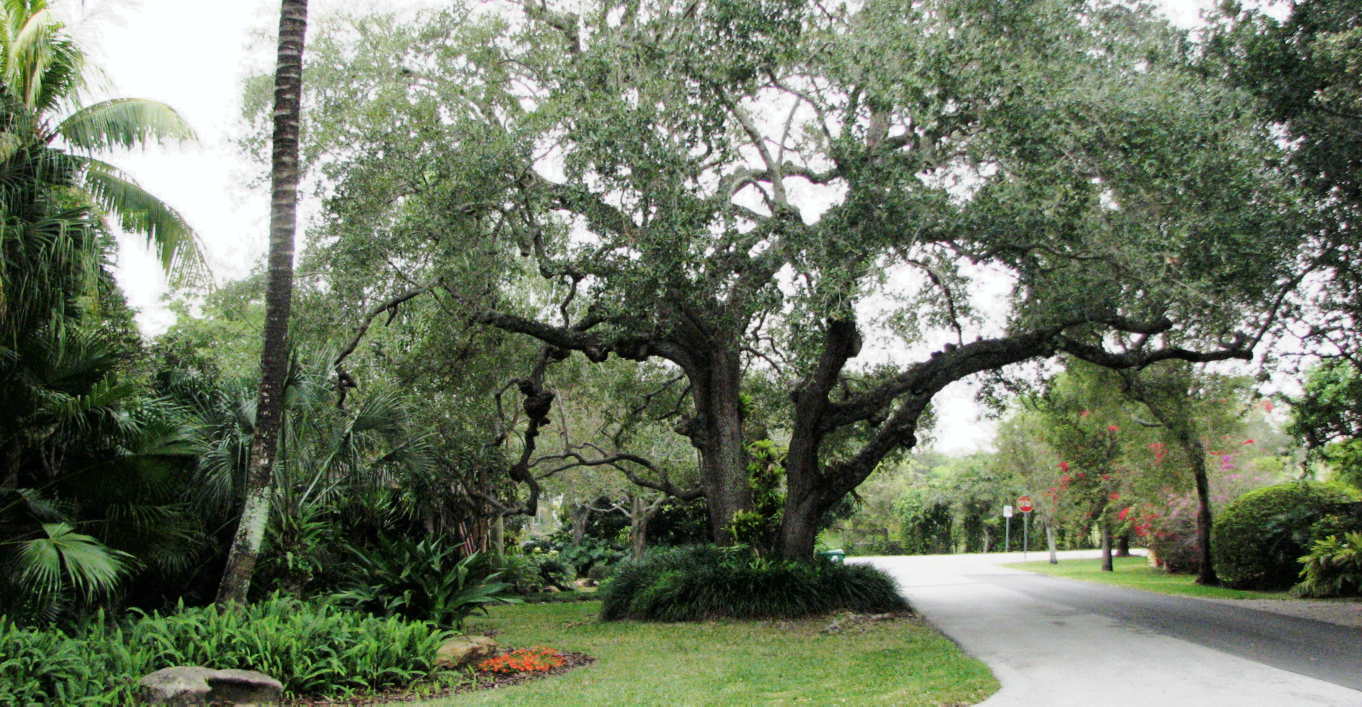Safe To Stay
This oak tree lived here for decades, perhaps as long as 60 years or more, and is expected to be around many more years. Live oak or evergreen oak (Quercus virginiana) is a general term for a number of unrelated oaks in several different sections of the genus Quercus that happen to share the characteristic of evergreen foliage.
The name live oak comes from the fact that evergreen oaks remain green and "live" throughout winter, when other oaks are dormant, leafless and "dead-" looking. The name is used mainly in North America, where evergreen oaks are widespread in warmer areas, along the Atlantic coast from southeast Virginia and North Carolina to Florida, west along the Gulf Coast to Texas and across the southwest to California and southwest Oregon.
The live oak is the official state tree of Georgia. Us? We have the Orange tree, but we also have plenty of live oaks.
Live oak trees are protected by law and cannot be cut down if their trunks are larger than a given size depending on a complicated zoning rule. The idea is to recognize the unique role oaks play in the ecosystem. Oaks are a keystone species, functioning much like the hub of wheel. Over 5,000 species of insects, 58 species of reptiles and amphibians, 105 species of mammals and over 150 species of birds rely on oaks for some of their life cycle. If the oaks are gone, so are these associated species. Not to mention hordes of squirrels will become homeless.


1 comment:
Views like this made me fall in love with South Florida.
Post a Comment